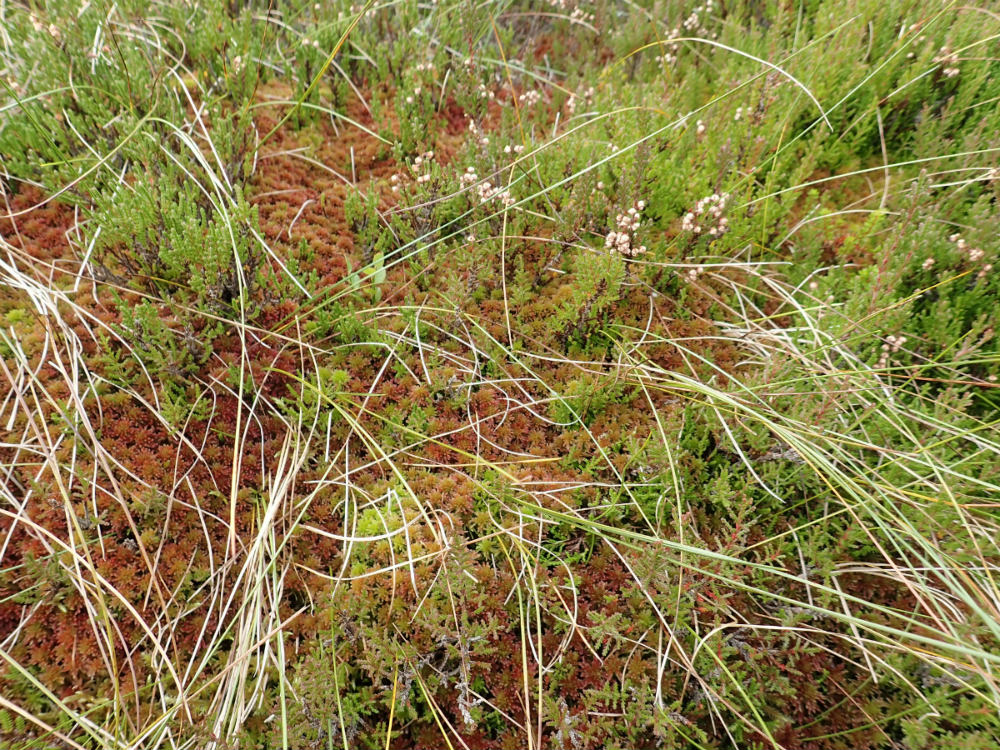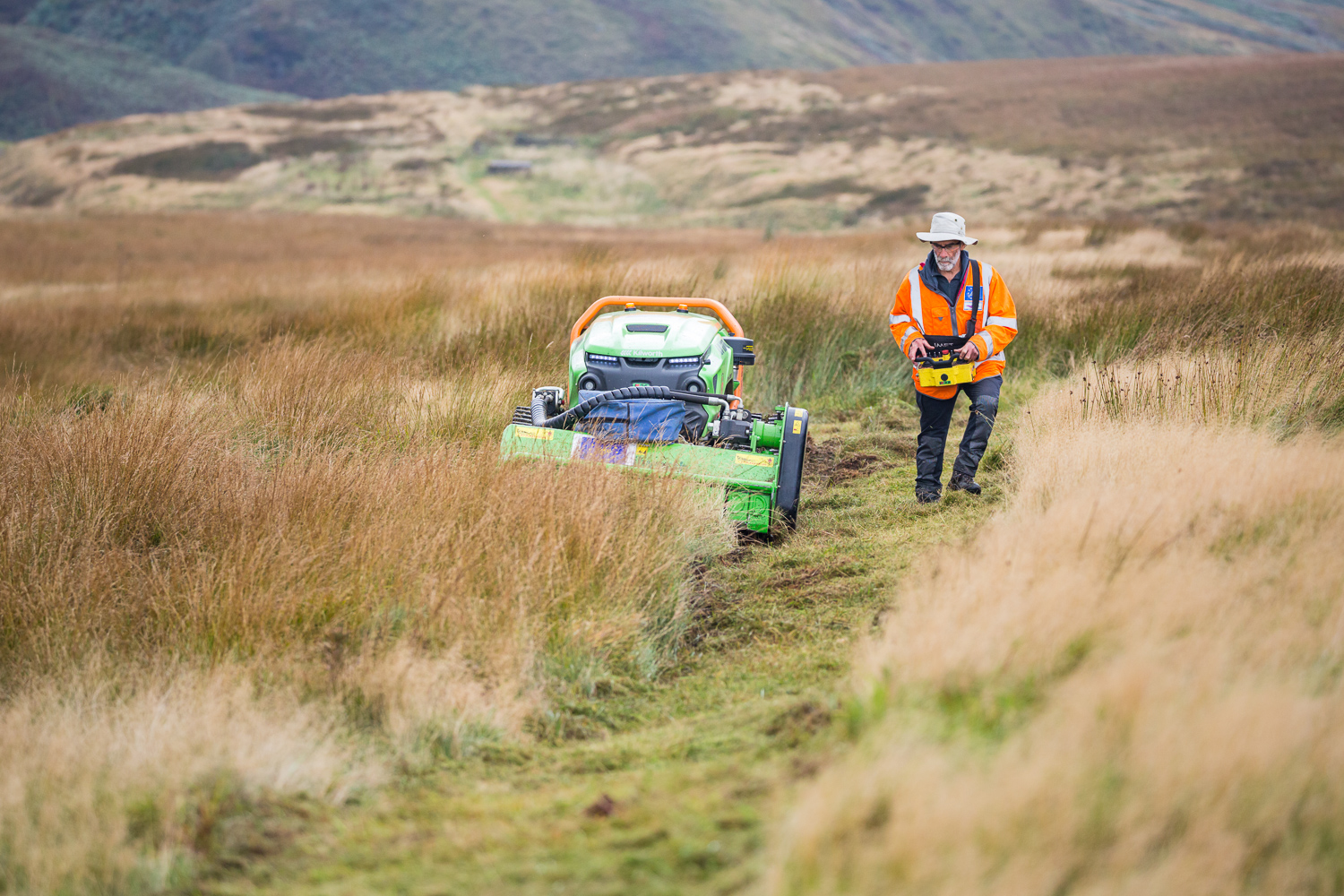Cutting to reduce dominant plant species
We cut dense patches of heather, cotton grass and purple moor grass to allow a mixture of other species to return, making for a healthier mix of moorland plants.
We also bought a remote-controlled cutting machine that can traverse terrains of up to 60° (essential for some areas), which we made available for land managers to use. We also used tractors with flail attachments to mow the stands of vegetation.
On some moors, a single species of plant has become dominant and out-competed other blanket bog species. This is often because conditions have become more amenable for a certain species. For example, heather thrives in drier conditions where other bog plants may have died off.
In areas that are dominated by a single species, we cut and then planted a mixture of sphagnum mosses to kick-start the process of diversification.
When we cut heather, we can use the cuttings (brash) to spread on bare peat in nearby areas as part of the stabilisation process.
Cutting molinia breaks up the dense tussocks of the grass, making way for other species to grow.
We trialed a technique whereby we didn't cut cotton grass, but applied sphagnum, to see if the diversification would be successful without the need for cutting (i.e. the sphagnum will survive and grow).
Blanket bogs in good condition contain a rich variety of plants, underpinned by several species of sphagnum moss. This diversification work is an important step in our journey towards healthy, functioning blanket bog.


You may also be interested in...
Funded by




